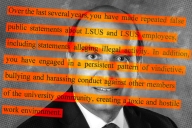You have /5 articles left.
Sign up for a free account or log in.
Andrew Bishop is pursuing a Master of Public Policy at the University of Virginia. You can follow him on Twitter @xiongandi.
I made a lot of mistakes in my first year of teaching sixth grade language arts. I struggled with classroom management, neglected chances to let my students work together, and designed teacher-centered lessons that were far from engaging. I used texts that were part of the standard curriculum and rarely deviated, stymying creativity in the classroom. Yet the biggest challenge I faced as a white teacher in a classroom filled with students of color was failing to recognize that my own identity was blinding me to opportunities that would allow my students’ identities to take center stage.
Fortunately, I worked within an organization that acknowledged my blind spots and guided me through the process of starting to recognize this issue. During my time with Teach For America, I began engaging in identity work. Delving into your identity and the way it impacts others is not an easy process. It forces you to sit with uncomfortable ideas and deeply reflect on the privileges you enjoy and biases you hold. It’s also not something that will happen overnight. There is no “end” point, and this type of work takes a lifelong commitment. I see it as less of a quest which has a specific goal to achieve and more of a journey that will take you as far as you are willing to go.
Through this process, I was able to design stronger lessons and incorporate texts that were more culturally relevant and allowed my students’ identities to shine. Without engaging in this work, I would not have found success in the classroom. Even though I was surrounded by endlessly patient and supportive colleagues at my school and taught a group of brilliant students, there were things that I needed to address about myself first in order to make improvements. For many of us, identity work is not something that is a core component of our programs or even incorporated into our coursework at all. Yet without doing this type of reflection, we may be missing opportunities to engage more deeply with our work as well as those around us.
In the book The Art of Coaching: Effective Strategies for School Transformation, Elena Aguilar uses the concept of an “optical refractor” to describe how coaches should look at issues through a variety of lenses. These lenses allow you to see situations in different ways, each with its own focus. I’ve found that this framework is applicable not just in coaching, but also in the work we do in grad school. When we look at our respective academic fields, it is critical that we think about issues beyond what our own personal “blinders” may allow us to see. Mindfully using different lenses can help us overcome our biases because they force us to consider information we might otherwise have avoided.
I’m currently in a public policy program and I’ve found that this framework is invaluable in pushing me to think beyond my own blinders at who policies may affect. Last semester, I challenged myself to look at issues through a lens of “equity.” As I worked through papers and projects, I tried to focus on how policies would impact different groups of people rather than simply looking at overall effects. Without a foundation in identity work, it is unlikely that I would have done this.
For those of you who are interested in beginning this journey or need some direction, I wanted to include a few resources that I have found incredibly helpful along the way:
1. Why Are All the Black Kids Sitting Together in the Cafeteria?: And Other Conversations About Race by Dr. Beverly Daniel Tatum: Dr. Tatum’s work defines racism, introduces identity, and explains how identity develops across different racial groups.
2. So You Want to Talk About Race by Ijeoma Oluo: This book provides an excellent primer on how to discuss race with others. It is critical to share and discuss what you are learning in order to help you process your own lived experience and speak up more on these issues.
3. For White Folks Who Teach in the Hood… and the Rest of Y’all Too: Reality Pedagogy and Urban Education by Dr. Christopher Emdin: Dr. Emdin includes a healthy dose of relatable anecdotes with best practices that shaped the way I teach. These lessons are applicable at all levels.
4. Just Mercy: A Story of Justice and Redemption by Bryan Stevenson: If you want to understand the existence of institutional racism and systemic oppression in the United States, this book is where you need to start. Simply put, this will change you and the way you see the country.
Please note that this list is simply a starting point and focuses primarily on developing racial identity awareness; there are countless resources out there that focus on other key identity markers and the importance of intersectionality.
I still have a long way to go on my personal identity journey, and writing this article is a step that I am taking to becoming more vocal on issues that are important to me. I hope that you have found it helpful with respect to wherever you are on your own journey.
What resources have you found helpful in doing your own identity work? Feel free to share with us in the comments below.
[Image taken and submitted by the author.]








